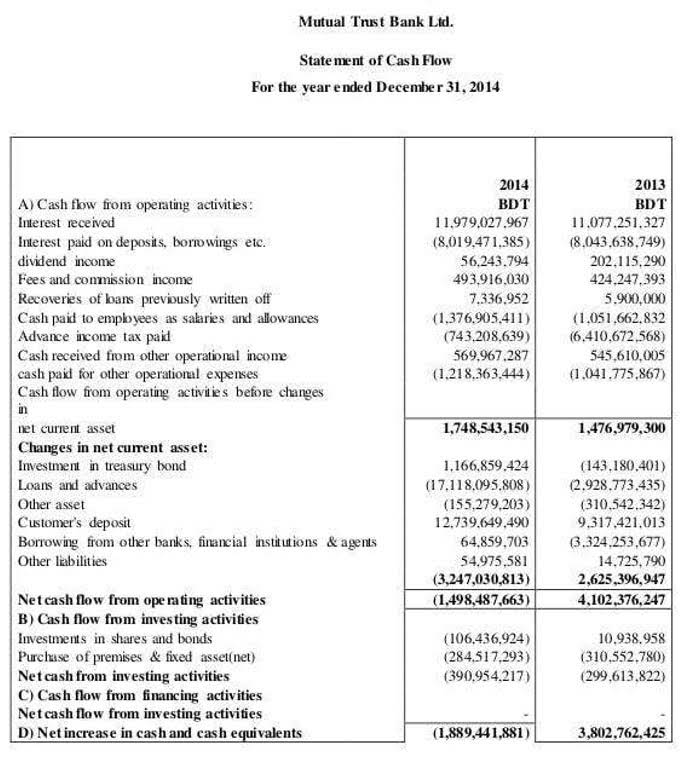
This involves estimating the future costs of dismantling and restoration, which are then discounted to their present value. The present value of these future costs is recorded as a liability on the balance sheet, with a corresponding increase in the carrying amount of the related asset. Over time, the liability is accreted, or increased, to reflect the passage of time, while the capitalized cost is depreciated over the useful life of the asset.
Production Sharing Contracts

In other words, they are estimated quantities of crude that oil companies believe exist in a particular location and can be exploited. We are compliant with the requirements for continuing education providers (as described in sections 10.6 and 10.9 of the Department of Treasury’s Circular No. 230 and in other IRS guidance, forms, and instructions). The most important point about Oil & Gas LBO models, ironically, is that oil & gas leveraged buyouts rarely happen. I hinted at this in the last part of the NAV explanation above, but sum of the parts is a very common valuation methodology in the energy industry. You add all those up to arrive at Enterprise Value, then back into Equity Value the normal way, and calculate the company’s Implied Share Price by dividing by the diluted shares outstanding. Then, you add up and discount everything based on the standard 10% discount rate used in the Oil & Gas industry (no WACC or Cost of Equity here).
- As the world and the market are rapidly changing, you need to follow the trends and fit into standards.
- Upstream activities involve exploration and production, midstream covers transportation and storage, while downstream includes refining and marketing.
- Depletion, depreciation, and amortization (DD&A) are essential accounting practices in the oil and gas industry, reflecting the gradual consumption of capital assets over time.
- One of the unique aspects of taxation in this sector is the concept of “ring-fencing,” where the tax liabilities of a company’s oil and gas operations are isolated from its other business activities.
- If the well is unsuccessful–called a dry hole–the cost must be charged as an expense against revenue for that period.
Moderate Your Operations

Information is considered material if its omission or misstatement could influence the economic decisions of users. Expenses should be recognized in the period in which they are incurred, helping to match costs with the revenue they generate. As for https://www.instagram.com/bookstime_inc the software, solutions like petroleum accounting software are an inevitable part of accounting improvement. As the world and the market are rapidly changing, you need to follow the trends and fit into standards. As the method, with which WEZOM approaches clients, includes the careful consideration of individual needs, in both of the real-life cases, the process of software creation involved many stages and additional decisions in both cases. There are certain best practices in choosing software for oil and gas accounting, so let’s have a look at them so that you can make your choice more wise and well-thought.
Energy: Delivering value up and down stream
Companies often employ specialized software like Petrel or Eclipse to model and estimate reserves, ensuring precision and compliance with industry standards. Oil and gas accounting is a specialized discipline essential for accurately tracking and reporting financial activities in the oil and gas industry. It ensures transparent financial reporting, compliance with regulations, and strategic decision-making. As an intricate discipline, oil and gas accounting plays a pivotal role in valuing assets, managing risks, and supporting sustainable practices in the exploration, extraction, and production of oil and gas resources. Depletion, depreciation, and amortization (DD&A) are critical components of financial accounting in the oil and gas industry, reflecting the gradual consumption of capital assets over time.
Oil and gas companies: 2020 Q2 accounting, financial reporting, and regulatory developments
- The SEC has taken numerous actions to address registrant, investor, and market COVID-19 concerns, which are accumulated and discussed at the SEC COVID-19 Response site.
- This necessitates careful consideration of the timing and amount of revenue to be recognized, especially if the buyer does not take the full contracted volume.
- Impairment occurs when the carrying amount of an asset exceeds its recoverable amount, necessitating a write-down to reflect the diminished value.
- For example, if the company has 2 million barrels of oil reserves and an FCP of $50 million, each barrel, in theory, costs $25.
- When there are conflicts between different accounting principles or methods, a hierarchy exists to guide the selection of the most appropriate principle.
- In addition to these factors, companies must also consider the impact of joint ventures and partnerships on revenue recognition.
- Our collaborative approach takes the time to understand your unique business needs and contextualize how they could be impacted by the industry as a whole.
Any actual difference comes down to an individual company’s overall business processes and how they meet their customers’ needs. In May 2020, the SEC adopted amendments to the required financial disclosures about acquired and disposed businesses. The amendments will be effective on Jan. 1, 2021, but early voluntary compliance is permitted. Companies may have changes to their processes and internal controls as they adapt to the new conditions necessitated by COVID-19, such as working remote, personnel losses, and other constraints.

Fields of Oil and Gas Accounting
In the oil and gas sector, this can occur at different stages, such as at the wellhead, after transportation, or upon delivery to a refinery. The terms of the contract will dictate the specific point of transfer, which in turn determines when revenue can be recognized. For instance, a contract might stipulate that revenue is recognized when the oil is delivered to a storage facility, rather than when it is extracted from the ground. This distinction is crucial for accurate financial reporting and compliance with accounting standards. Reserves are classified into proved, probable, and possible categories, each with varying degrees of certainty. Accurate reserve estimation is crucial for financial reporting, as it affects asset valuation and depletion calculations.
Expense Recognition (Matching Principle)
So you might, for example, use traditional multiples like EBITDA for the midstream and downstream segments, and then use Proved Reserves or Production multiples for the upstream segment and add them together to arrive at the final value. For cases where the company is highly diversified – think Exxon Mobil – you need to value its upstream, midstream, downstream, and other segments separately and add up the values at the end. It is widely used in oil, gas, mining, and other commodity-based sectors, and it often produces more accurate results than the standard DCF analysis. For E&P companies, there’s an alternate intrinsic oil accounting valuation methodology called the Net Asset Value (NAV) model that often gives more accurate results.
- Luckily, the industry is doing a great job of utilizing technology to eliminate tedious, non-value-added tasks.
- Dive deeper into industry hot topics to help your business stay ahead of change and plan for what’s next with our complimentary webcasts, available to view on demand.
- You can break down most niche accounting functions into one of those six primary ones as all industries have capital expenditures, operating costs, general and administrative expenses (G&A), and other aspects.
- These reports enable the non-operating partners to account for their share of the joint venture’s activities in their financial statements.
- In cases of drilling ventures deemed unsuccessful, these expenditures are promptly deducted as expenses on the income statement.
- This section dives into the changes in the key accounting issues due to the new revenue recognition standard.
Corp Fin observed companies making some of these disclosures in their earnings releases but encourages companies to evaluate whether any of the information should also be included in management discussion and analysis (MD&A). Under this method, the company must prove that its reserves carry a value that exceeds the FCP value. If it doesn’t, the value of the reserves must be written down according to the “ceiling test write-down.” Under successful efforts, each cost center, or group of assets, is tracked separately so that actual costs are measured. According to the Securities Exchange and Commission (SEC), oil companies are required to report these reserves to investors through https://www.bookstime.com/ supplemental information to the financial statements.
When faced with uncertainty, accountants should choose methods that are less likely to overstate assets and income. The principle outlines when and how to recognize revenue from the sale of goods or services. It provides guidance on the recognition criteria, measurement, and disclosure of revenue in financial statements.